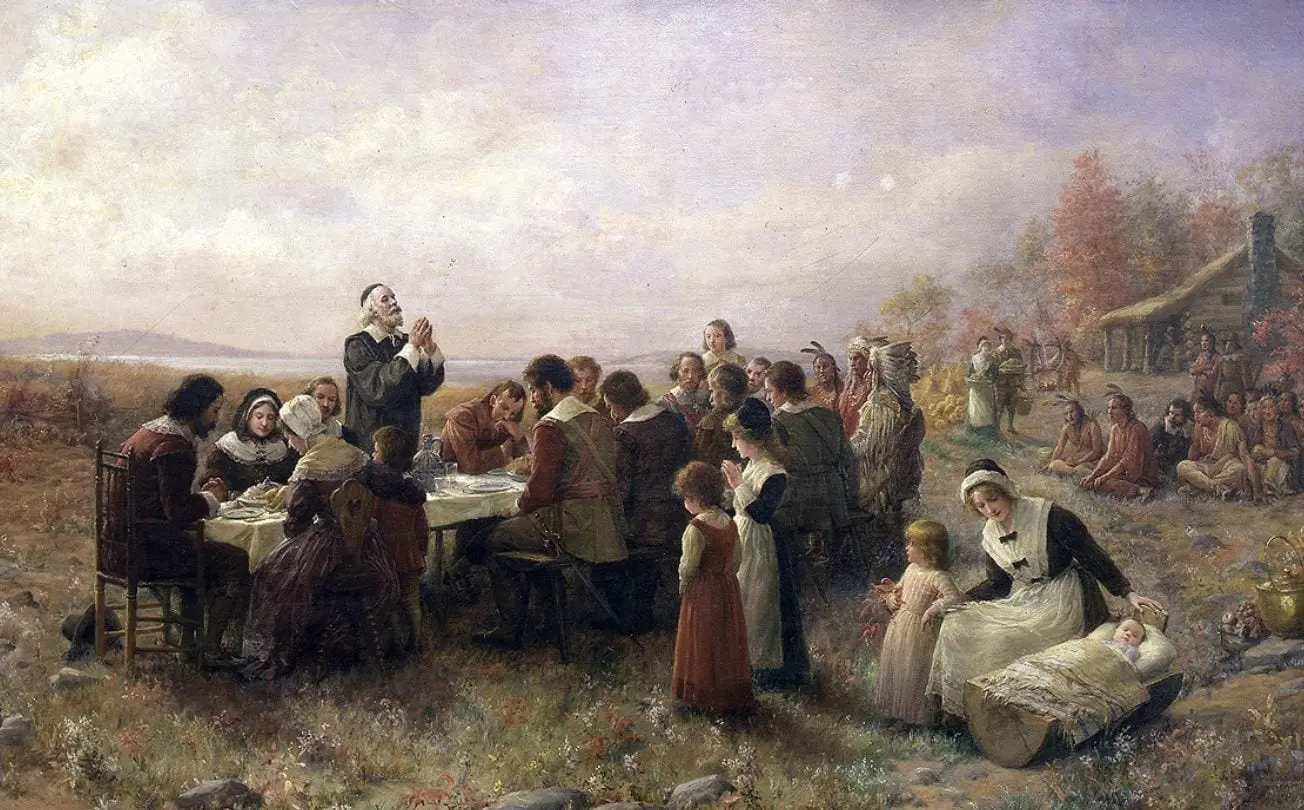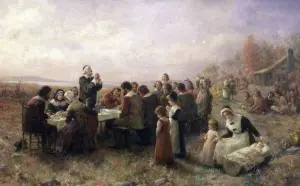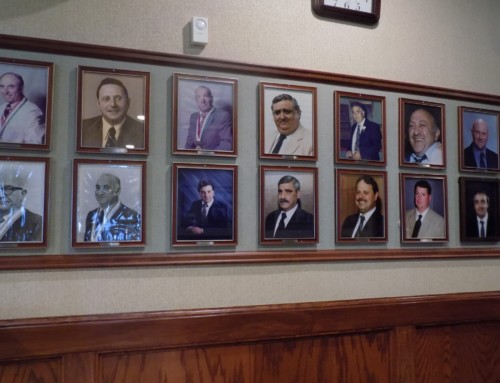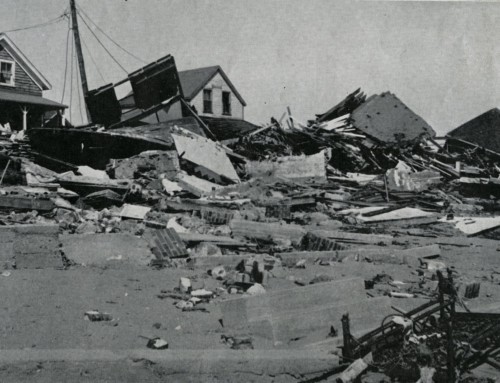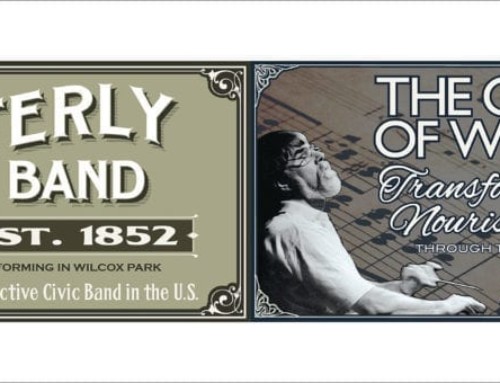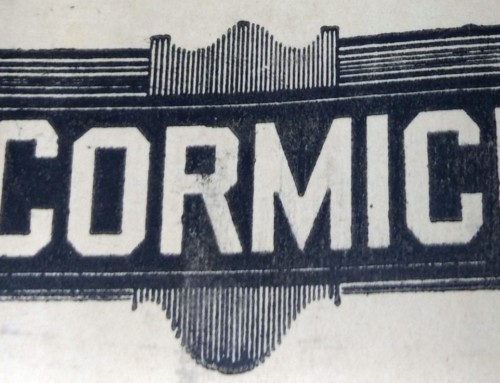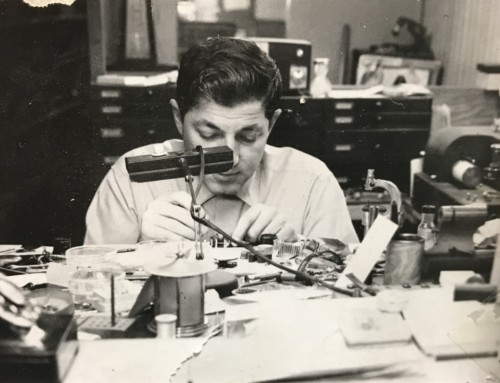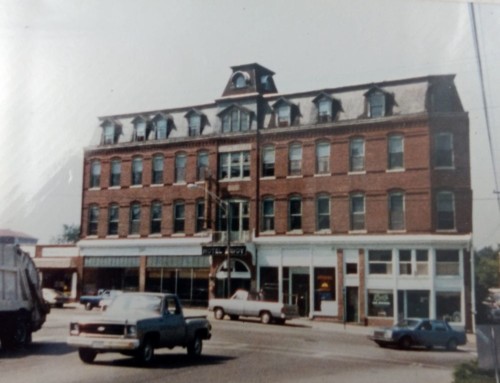This holiday season I was wondering how the first Thanksgiving might have been celebrated by the first settlers in Westerly. Legend has it that the first pioneers who arrived in Westerly were a young couple from Newport, John and Mary Babcock, who had eloped because Mary’s father did not approve of John. The couple loaded a canoe with supplies and paddled down the coast to the Pawcatuck River. They landed in a small cove by Mastuxet Brook. With the help of local Native Americans, they set up a teepee and stayed.
I’m not sure where this story originated from but other accounts don’t seem to support this romantic tale. John, who was 18 at the time, was a member of the Misquamicut Company, a company from Newport that was organized to purchase and settle a large tract of land that included Westerly. John and his father moved to Westerly around 1661 with the first permanent settlers and received apportionments of land. John built a cabin on the banks of the Pawcatuck River near Avondale, Rhode Island. John and Mary didn’t celebrate Thanksgiving because Thanksgiving wasn’t celebrated for almost another 200 years.
It all started with the Mayflower, the English ship that transported a group of immigrants from England to the New World in 1620. Many of the immigrants were Puritans. The term Pilgrim became the popular term applied to all the Mayflower passengers and to other people arriving in Plymouth in those early years. The Mayflower arrived in New England in 1620 after a stormy voyage of 66 days. The Pilgrims had originally intended to settle near the Hudson River in New York but were forced to seek shelter at Cape Cod.
A party began to explore the area to find a suitable place to settle. They found what appeared to be an abandoned Wampanoag village. The plentiful water supply, good harbor, cleared fields, and location on a hill made the area a favorable place for settlement, and the colonists began building their town. While houses were being built the group continued to live on the Mayflower. That winter many of the colonists fell ill suffering from scurvy and pneumonia which was caused by a lack of shelter in the cold, wet weather, and poor food. As many as two to three people died each day during their first two months on land.
Historian Benson John Lossing described that first settlement: “After many hardships, the Pilgrim Fathers first set foot December 1620 upon a bare rock on the bleak coast of Massachusetts Bay, while all around the earth was covered with deep snow. Dreary, indeed, was the prospect before them. Exposure and privations had prostrated one-half of the men before the first blow of the ax had been struck to build a habitation. One by one they perished. The governor and his wife died in April 1621; and on the first of that month, 46 of the 100 emigrants were in their graves, 19 of whom were signers of the Mayflower Compact.”
Only 52 of the original 102 people survived the first year in Plymouth. When Mayflower left Plymouth on April 5, 1621, she was sailed back to England by only half of her crew.
Four months after arriving in Plymouth the colonists met and communicated with the Native American people there. Squanto, a member of the Pawtuxet tribe who spoke English, taught the Pilgrims how to cultivate corn, extract sap from maple trees, catch fish, and avoid poisonous plants. He also helped the settlers forge an alliance with the Pokanoket Wampanoag leader, Ousamequin, also known as Massasoit to the Pilgrims.
In the fall of 1661, the colonists marked their first harvest with a three-day celebration. Massasoit and 90 of his men joined the English for feasting and entertainment. This historic celebration became the basis for the story of the first Thanksgiving. It didn’t happen on the fourth Thursday in November, as it does today, but sometime between late September and mid-November. It took place over a three day period and wasn’t known as Thanksgiving but as a harvest festival.
Thanksgiving, as we celebrate it today, really didn’t start until the mid-19th century. It was popularized by Sarah Josepha Hale, editor of the popular women’s magazine Godey’s Lady’s Book. Hale petitioned 13 presidents to make Thanksgiving a national holiday and worked to convince President Lincoln that it would be a good way to unite the country during the Civil War. In 1863 Lincoln made Thanksgiving a national holiday.
However, many Native Americans do not celebrate the arrival of the Pilgrims and Thanksgiving Day. To them, it is a reminder of the genocide of millions of their people. Instead, they participate in the National Day of Mourning which is an annual protest, organized in 1970 by Native Americans of New England, on the same day as Thanksgiving.
John passed away in Westerly 1684 and Mary followed in 1711. They’re buried in the James Babcock Ground on Watch Hill Road in Westerly. I think that even if John and Mary never celebrated Thanksgiving as we know it today they would have given thanks to God and celebrated their harvest. So while we enjoy our turkey with all the trimmings, and give thanks for all our blessings, remember Thanksgiving has a rich history, and please pass the cranberry sauce.
